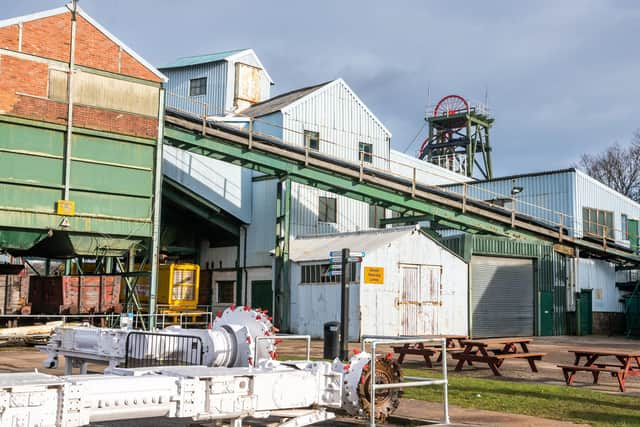Why it’s important to keep our proud industrial heritage alive through assets such as the National Coal Mining Museum (NCMME) - Jayne Dowle
Long re-landscaped, if you didn’t know what it once was, you’d assume it was part of the surrounding fields. But I remember the winding gear, the constant whirr of mechanical noise, and what this village was like when almost all the men (and quite a few of the women, in offices and canteens) were employed there.
Many of my ancestors came to Barnsley to work at Barrow Colliery from the 1870s, when the pit opened; one great-grandfather walked with his mother and numerous siblings from the Forest of Dean, Gloucestershire, where coal is still won on a small scale by ‘freeminers’ who hold ancient rights to dig the land.
Advertisement
Hide AdAdvertisement
Hide AdAnother, a great-great-grandfather, walked as a child with a whole community from the area around Whiston, in what is now Merseyside, making the trek over the Pennines to join the young men who had gone on ahead, pioneers every one.


Obviously, my family history informs my interest. I’ve also spent time in the excellent library at the NCMME, researching for a community book I edited on the history of Woolley Colliery, just a few miles away from the site. I take my virtual pit helmet off to all the staff and volunteers, including the former miners who shepherd visitors into the pit cage and lead guided tours underground.
It’s a marvellous place and today the museum is holding an open day to recruit those new volunteers, who can also apply online. Anyone 18-plus is welcome, whether they worked in the mining industry or not. If I had any time to spare at all, I’d be putting my name down.
We’re so fortunate to have NCMIM on our doorstep – it’s just off Junction 38 of the M1 and within a few miles of Barnsley, Dewsbury and Huddersfield. And entry is free.
Advertisement
Hide AdAdvertisement
Hide AdCreated on the site of the former Caphouse Colliery, and opening in 1988, the museum was granted national status in 1995, making it the major coal-mining heritage centre in England. There are a number of smaller museums dedicated to the history of this industry dotted around the UK.
Here however, in the heart of the Yorkshire coalfield, we have a treasure that links us directly back to our history. Whatever your own background, it’s odds-on that coal will have played a part in it somewhere; whether your family were landowners who made a fortune out of mineral rights, or mariners who shovelled coal into ship’s engines.
And rather than being dedicated to a dusty old subject that belongs firmly in the past, the museum’s relevance has never been more striking.
This winter, as we’re enduring the punishing rise in energy bills, de facto energy rationing, fears over future fuel security as Putin shows no sign of drawing in his horns, and the go-ahead granted for the UK’s first deep coal mine in 30 years, in Whitehaven, in Cumbria, we’re all asking questions about how the quest for ‘clean energy’ will evolve.
Advertisement
Hide AdAdvertisement
Hide AdThis is especially pertinent as this government has committed to net zero carbon by 2050. However, it’s complicated. Coal-fired power stations, supposedly being phased out, including Drax in West Yorkshire, have been put on standby in recent weeks as colder, less windy weather put pressure on supplies.
It's reported that Drax, and West Burton in Nottinghamshire, owned by France’s EDF, agreed in the summer to extend the lives of their coal-fired generation units through the winter in exchange for fees, as the UK government looked to shore up energy availability.
Despite the fact I’ve got coal dust in my veins, I’m not immune to the environmental implications of continuing to burn solid fuels; and it’s not only coal-fired power stations under question.
Only this week we learnt that homeowners failing to abide by the clean air rules on log-burning stoves will face a fine of up to £1,000 and a possible criminal record. It’s estimated that at least 1.5 million homes in the UK now have a log-burner, with many installed in response to rising fuel costs.
Advertisement
Hide AdAdvertisement
Hide AdWhat is clear is that people are questioning the wisdom of being held to ransom by energy companies, and, where possible - with a typical modern log-burner meeting the industry’s own rules on emissions costing a substantial £1,500, plus the same for installation – taking matters into their own hands. The campaign against the new coal mine in Cumbria has been vociferous, but decisions on how to keep warm are generally personal, not political.